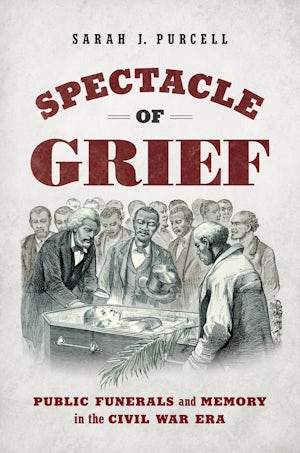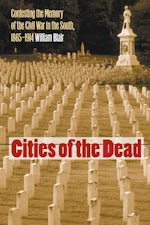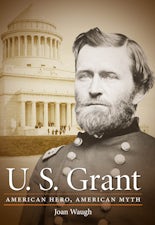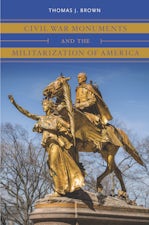Spectacle of Grief
Public Funerals and Memory in the Civil War Era
By Sarah J. Purcell
352 pp., 6.125 x 9.25, 17 halftones, 6 maps, notes, bibl., index
-
Paperback ISBN: 978-1-4696-6833-8
Published: April 2022 -
E-book EPUB ISBN: 978-1-4696-6834-5
Published: February 2022 -
E-book PDF ISBN: 979-8-8908-5160-4
Published: February 2022 -
Hardcover ISBN: 978-1-4696-6832-1
Published: April 2022
Civil War America
Buy this Book
- Paperback $34.95
- Hardcover $95.00
- E-Book $26.99
For Professors:
Free E-Exam Copies
Purcell shows how large-scale funerals for figures such as Henry Clay and Thomas J. “Stonewall” Jackson set patterns for mourning culture and Civil War commemoration; after 1865, public funerals for figures such as Robert E. Lee, Charles Sumner, Frederick Douglass, and Winnie Davis elaborated on these patterns and fostered public debate about the meanings of the war, Reconstruction, race, and gender.
About the Author
Sarah J. Purcell is L. F. Parker Professor of History at Grinnell College.
For more information about Sarah J. Purcell, visit
the
Author
Page.
Reviews
"Disputes over the meaning of conflicts continue long after the shooting stops. The Civil War ended some 157 years ago, but Americans still argue about how to remember it. Was Lee, for example, a noble Virginian or a heartless whipper of captive humans — and should his statue stand in our cities? [Spectacle of Grief] grapple[s] with such questions by examining the rich subject of American funerals in the 19th century."—Thomas E. Ricks, New York Times Book Review
"Funerals and the ensuing rites of public mourning for prominent individuals have been more than just an occasion to honor the deceased since the Age of Pericles. Here, Susan Purcell closely examines the public funerals of nine Civil War-era individuals to explain how those events were shaped and memorialized to bolster the current political and ideological needs of various segments of society."—America's Civil War
"Inspiring . . . . Purcell’s work is an important contribution to the history of memory and the Civil War."—Journal of the Early Republic
“Spectacle of Grief typifies a nineteenth-century American civic ritual best known through the literature on its grandest observance, the obsequies for Abraham Lincoln, supplemented by scholarship on the funerals of Ulysses S. Grant and Jefferson Davis. . . . Purcell shows that the public funeral remains an important vehicle for reverberations of the Civil War.”–Journal of American History
"There are many significant lessons here as we contemplate the powerful moments of significant lives whose memories have prevailed through generations. . . . Purcell gives us a framework for understanding the uses of public mourning rituals today, whether secession is part of the equation or not."—Nineteenth Century
“Public funerals still communicate messages about politics and national identity [and Purcell] helps readers navigate the sometimes-treacherous waters of our own era.” —Civil War Book Review




